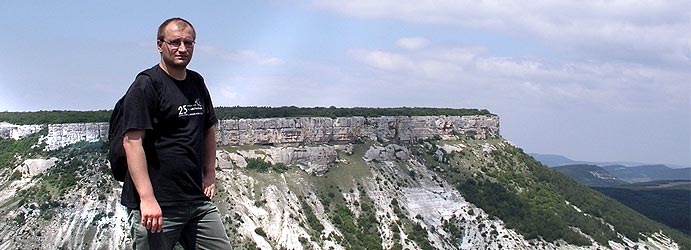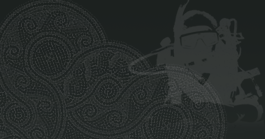|
|
 |
|
|
[1]
[2]
[3]
[4]
[5]
[6]
These changes might have also embraced the structure of power within a tribe: it can be presented with the use of Michael Mann's 'IEMP' concept (1986)[31]. It is based on the assumption that there existed four sources of social power: ideological, economic, military, and political[32]. M. Mann suggested that social development in history should be explained on the basis of the differences of the interrelations and importance of the above factors, indicating that no universal laws can be assumed, possible to apply in the same way, regardless of the area and chronological period. Bearing in mind the fact that societies are more complex than our ideas about them (thus a universal model can not be formulated) M. Mann believes that the 'IEMP' concept should be verified by juxtaposing it to the empirical data. If the process were considered with the use of Mann's terminology, it should be assumed that in the discussed time the military sources of power gained in importance. The difference in the distribution of power may be also indicated by the fact that for that period no so called 'princely graves' are known so far from the Przeworsk culture area. As they were more numerous in the earlier period, this suggests a new way of reflecting superiority in burial rites[33]. Alina Kietlińska even treated this phenomenon as a proof of a break up of the inter-tribal union (Lugiorum nomen), which was to be connected with the formation of great number of retinues[34] and the increase in importance of respective tribal leaders (1963, p. 69). Kazimierz Godłowski supposed that union might have ceased to exist in the second half of the 2nd century A.D. (1982, p. 49).
The weapon sets in burials became more standardized than previously and this standardisation exceeded the territorial divisions within the Przeworsk culture. Pairs of shaft weapon heads clearly different in lengths became particularly popular, which indicates that there were two kinds of shaft weapons: javelins and lances. The specialization of combat, which is proved by the pairs of heads differing in lengths and standardization of weaponry may be interpreted as the indication of growing importance of military group (retinues), testified by Tacitus (see especially Tacitus, Germania 13, 2-3; 14, 1-3)[35]. Military leaders probably decided on what equipment their warriors would use (which may explain finds of series of similar shaft weapon heads in burials: perhaps as a result of making 'orders' for a certain number of weapons for a given group of men)[36]; they probably might have wanted to provide their warriors with uniform, highest quality weapons. This explanation seems to be supported also by the relatively short period in which the discussed shaft weapon heads types appeared: the limited time in which these heads were made may indicate that they were made to large orders (shaft weapon heads from deposit A in Illerup and from the deposit in Ejsbøl Nord are considered by C. von Carnap-Bornheim (1992, p. 50) in this way).
A significant phenomenon is the fact of the influx of imported Roman swords to the area occupied by the Przeworsk culture, which began in the late stage of phase B2 and culminated in phase C1a (Kaczanowski 1992, p. 32, 69-70). Whatever the underlying mechanism was, there was a pronounced increase in demand for these high-quality weapons, which were then deposited in certain burials of warriors. This may indicate that there existed military elites, which attracted other militarily active men. The position of those people might have been also expressed by their dress (especially in belt sets), which is proved by positive correlations between two-edged swords and broad, rectangular belt buckles with double spikes accompanied by massive belt-end fittings in burial assemblages (see: Madyda-Legutko 1990).
[1]
[2]
[3]
[4]
[5]
[6]
[31] At present Michael Mann's 'IEMP' concept is often adapted. It has been used by archaeologists (Kristiansen 1997, p. 38-39; Urbańczyk 1996, p. 3-4; Bursche 1998, p. 205) as well as by sociologists (see the assessment of state of research: Earle 1997, p. 8-9). Similar assumptions were made also by Webster (1975, p. 465) and Tymowski (1999, p. 114-115).
[32] IEMP - sources of social power: ideological, economic, military, political.
[33] As an analogy one may quote the disappearance of 'princely graves' at the area of the La Téne culture during its military expansion (manifested among the others by the presence of warriors' burials).
[34] The German equivalent is "Gefolgschaft".
[35] The institution of retinue (hird) is usually defined on the basis of Tacitus as a voluntary, sealed with an oath, union of warriors (free men) and their leader, in which the warriors were obliged to advise the leader and serve in military operations, and he, in turn was obliged to provide them with protection and generosity. More detailed aspects of the functioning of retinues are a subject of debate. For the definition and classification of Germanic retinues see Schlesinger 1953, p. 235; Kuhn 1965, p. 12; Wenskus 1961, p. 346-374; Hess 1977; Steuer 1982, p. 54-56; Kristensen 1983; Bazelmans 1991; von Carnap-Bornheim 1992; Wolfram 1996, p. 70-73. The author also touched upon this problem (Kontny, in print a).
|
|
 |
 |

